Pontiac Car Reviews and Road Tests |
|
 |
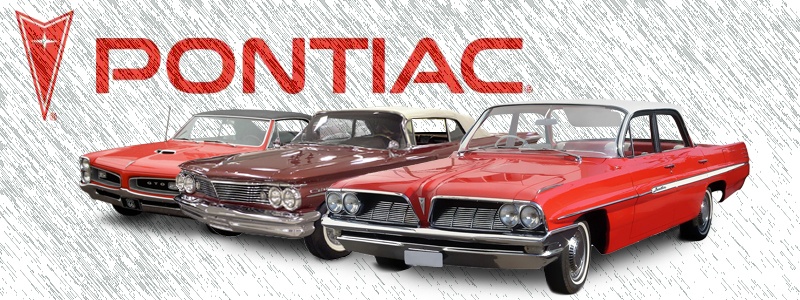
|
|
Arguably the 2nd most successful GM division, behind Chevrolet. The marque was “invented” by GM in 1926, the name being taken from the town of Pontiac, Michigan, where the cars were built. And as with the rival (Chrysler) Plymouth, the Pontiac’s had almost overnight success, some 200,000 being sold in 1929 alone. But the depression would take its toll on many, and Pontiac was hit hard, sales in 1932 slumping to a mere 50,000. While many of Pontiac’s sister marques fell by the way, GM President Alfred Sloan was determined that Pontiac should survive – but to do so would require some serious rationalisation.
Pontiac were forced to draw heavily upon the parts bin of Chevrolet, and then be sold under the Buick and Oldsmobile dealer network. With the threat of Pontiac’s losing their identity altogether, stylist Frank Hershey and chief body engineer Roy Milner set about ensuring the Pontiac’s looked as different as possible to other GM division cars – quite a feat considering the rationalisation plan meant many body panels had to be shared.
The Pontiac Eight of 1933 was a brilliant success, it featuring a silky smooth straight eight engine designed by Benjamin Anibal. The reputation of the Eight would spread, given the cars durability and reliability, and the engine would remain the mainstay until a new V8 arrived in 1955. By the late 1930’s sales, and the division, were in full recovery mode. After World War 2 Pontiac went from strength to strength, the Star Chief and Chieftan convertibles leading the way when American cars became long, wide and low riding.
Through the 1970’s it was Japanese competition and rising fuel prices that Pontiac were forced to contend with, the challenge being met with a plethora of fairly plain but easy to live with iterations such as the Phoenix, Grand Le Mans and Grand Am. The mid engined Fiero offered some driving excitement, and the Firebird Trans Am remained a leading muscle car. But it was the popular Grand Prix model that ensured the marque would continue to enjoy it’s position as the 3rd best selling brand in the U.S.
Also see: The History of Pontiac (USA Edition) |
 |
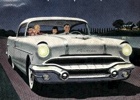 |
|
1954 - 1966
GM’s Pontiac division made a concerted effort to gain a host of new owners in 1956. How they went about getting more sales was apparent from driving any of the ’56 models, or from watching the changed philosophy in advertising. For many years, Pontiac were very quiet about performance; but this changed in 1956 when they openly bragged about "Power to Go.” The boasting was justified. More>> |
 |
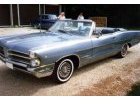 |
|
1958 - 1986
For most of its life, the Parisienne was the Canadian nameplate for the Bonneville, sold in Pontiac's Canadian showrooms, while American Pontiac dealers sold the Catalina, Ventura, Star Chief and Bonneville (the Catalina and Ventura were also available in Canada). More>> |
 |
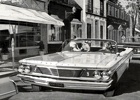 |
|
1959 - 1960
The Catalina, though it was the lowest-priced full-sized Pontiac, was still a substantial step up from the Chevrolet Impala in trim and appointments and only a short step below the Buick LeSabre and Oldsmobile 88 in trim and appointments but priced about $100 to $200 less. More>> |
 |
 |
|
1961 - 1964
The 1961 full-sized Pontiacs were completely restyled with more squared-off bodylines, the reintroduction of the split grille first seen in 1959 and dropped for 1960 and an all-new Torque-Box perimeter frame with side rails replacing the "X" frame chassis used since 1958. The new frame not only provided greater side-impact protection than the "X" design but also improved interior roominess. More>> |
 |
 |
|
1965 - 1970
The 1965 full-sized Pontiacs were completely restyled with more flowing sheetmetal featuring "Coke-bottle" profiles and fastback rooflines on two-door hardtops. Wheelbases increased to 121 inches (3,100 mm) on all models. A new three-speed Turbo Hydramatic automatic transmission replaced the previous Roto Hydramatic unit on full-sized Pontiacs for 1965. More>> |
 |
 |
|
1971 - 1976
In 1971 the mid-level Executive was discontinued and replaced with the Catalina Brougham, which offered a more luxurious interior trim than the regular Catalina. The Brougham was dropped in 1973 after its sales failed to meet expectations. 1972 also marked the final appearance of the Catalina convertible. More>> |
 |
 |
|
1977 - 1981
In 1977, Pontiac and other GM divisions downsized their full-sized cars in an effort to lighten weight and improve gas mileage. The Catalina continued as Pontiac's entry-level full-size automobile with a Buick-built 231 cubic-inch V6 now standard in sedans and coupes (Safari wagons came standard with V8 power) and optional V8s of 301 CID, 350 CID and 400 CID displacements, each Pontiac-built engines and offered in all states except California. More>> |
 |
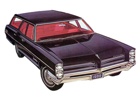 |
|
1961- 1964
The Laurentian, like the Parisienne, were GM Canadian model line nameplates - and as such they were never sold in the the USA. Built specifically for the Canadian market, they were soon being exported from Canada as disassembled "crate" or "CKD" cars. It was from these "CKD" kits that GM Holden assembled the Laurentian in Australia, as did New Zealand, the Netherlands and South Africa. More>> |
 |
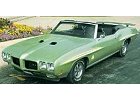 |
|
1964 - 1974
In the two years following the release of the Pontiac GTO every car company tried to emulate it, but none were able to match the combination of style, performance, and mystique. More>> |
 |
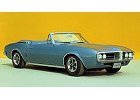 |
|
1967 - 1969
There is an interesting story behind the creation of the 1967 Pontiac Firebird. Then head of the Pontiac Division was John Delorean, who had envisioned a much sportier car to compete with the Ford Mustang. More>> |
 |
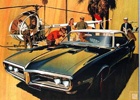 |
|
1967 - 1969
Like a dog big in the bollock department, the Pontiac had an edge over all of its rivals. It was an aura of excitement about the car, and its boldness, a car happy to wear its underpants on the outside. No other muscle car of the time had the audacity to plant an optional tachometer in a waterproof pod out on the hood. More>> |
 |
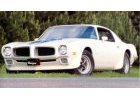 |
 |
1970 - 1976
Perhaps the most dissappointing of the re-design was that the new model no longer came available as a convertible - perhaps a true muscle car could not be marketed successfully as a drop-top. For whatever reasons, the Firebird lineup was reduced from six to four. More>> |
 |
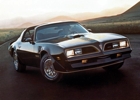 |
|
1970 - 1981
Since the introduction of the first Firebird, exhaust emission control regulations and changing fashions resulted in a much tamer and more sophisticated vehicle for the 2nd generation Pontiac. By 1979 the Firebird Trans Am had acquired a particularly stylish body, and the styling was helped by the intelligent application of flexible and resilient mouldings to give minor crash protection. More>> |
|
|
| Sell Your Car or Parts Browse the Classifieds It's Absolutely Free! - Find Out More |
|




